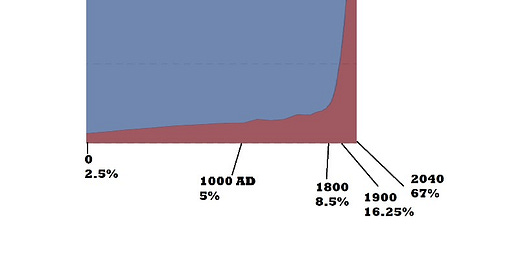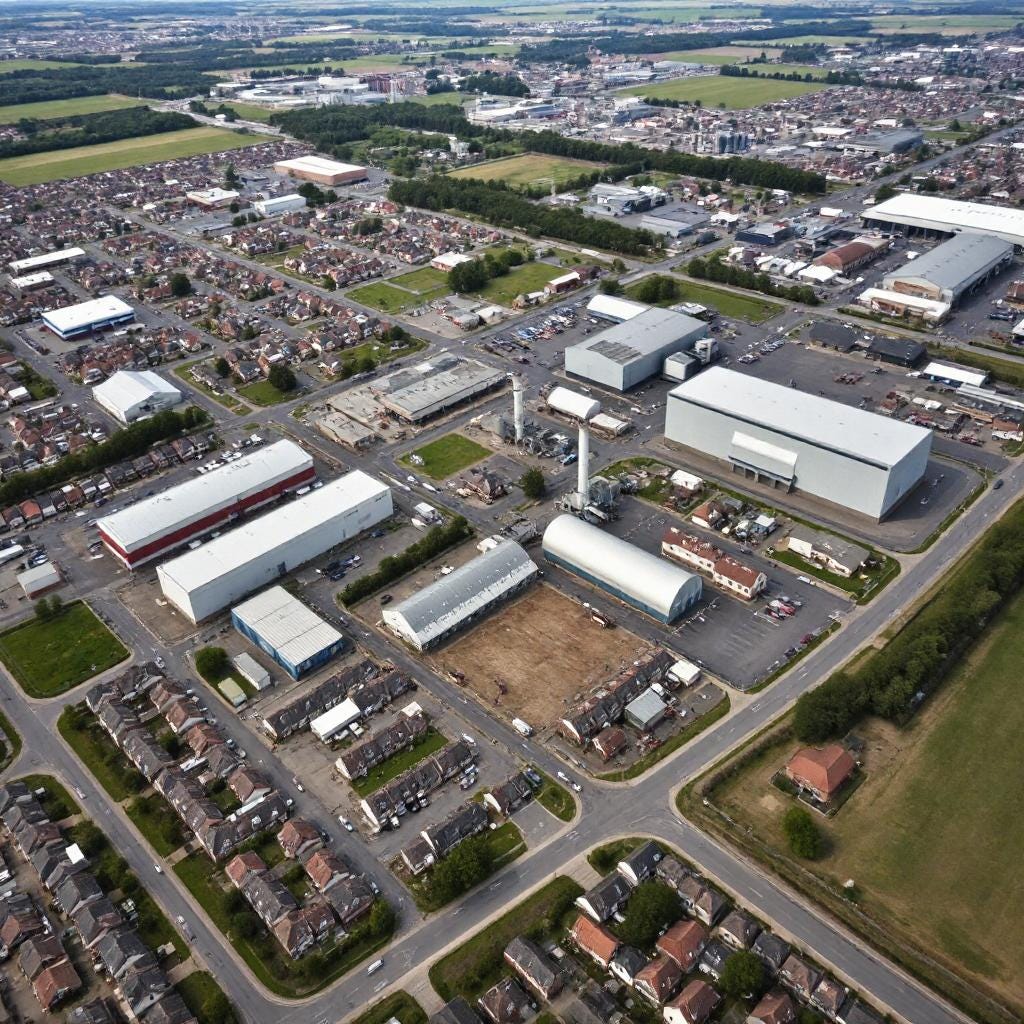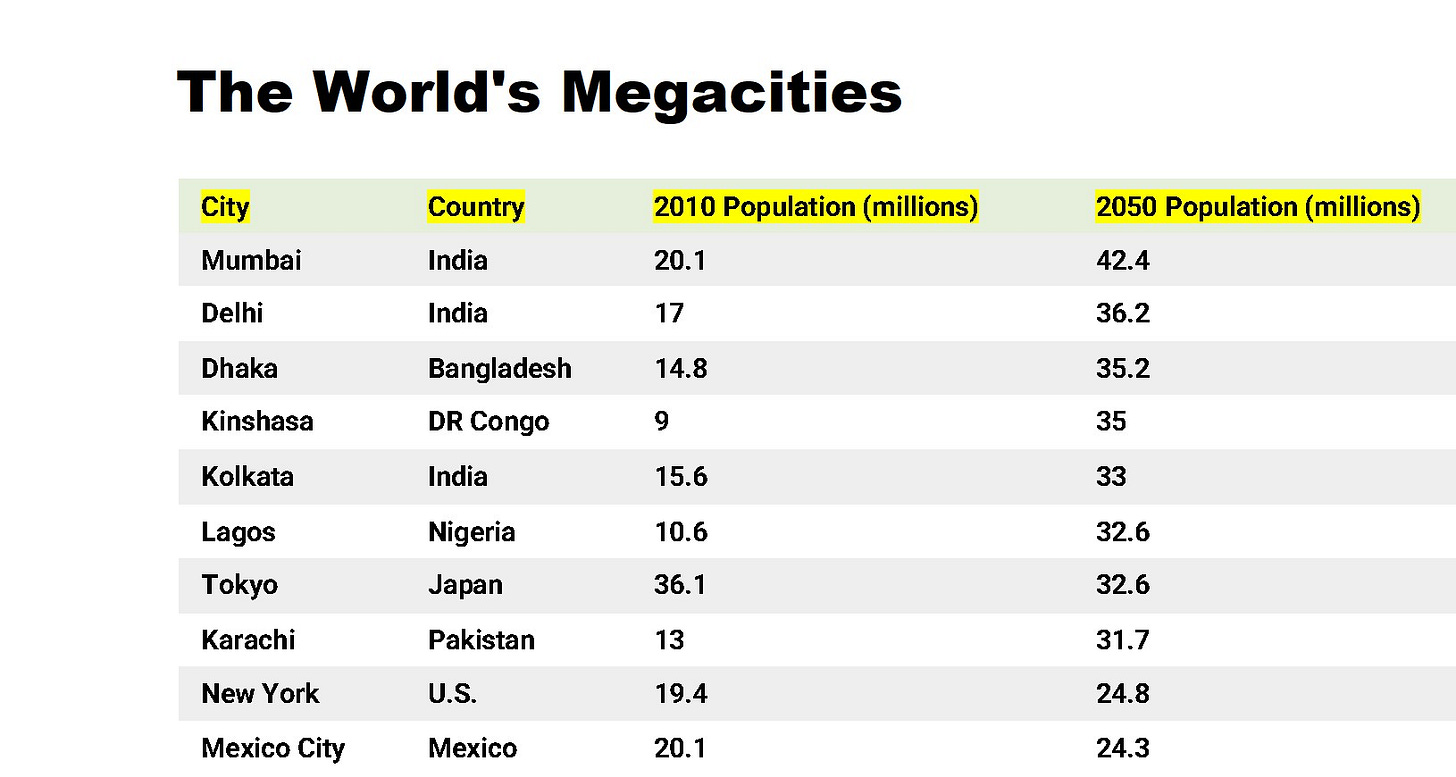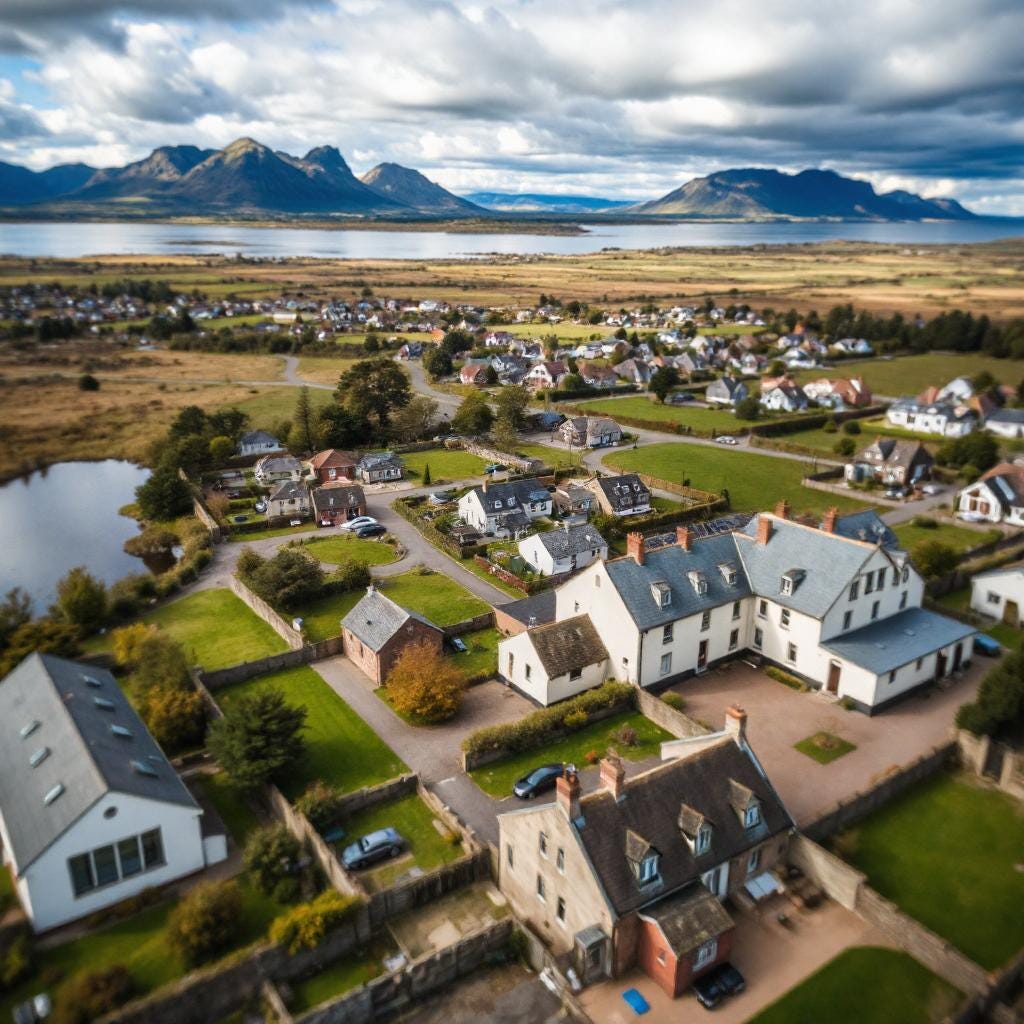(this brief introduction is the first part of my FREE book on Urban Geography - all subsequent sections will be released as Substack posts)
The 20th and 21st centuries witnessed an unprecedented wave of urbanisation, transforming the world's landscape as people migrated from rural areas to cities in search of better economic opportunities and improved living conditions. This global trend of urbanisation had significant social, economic, and environmental implications. In 1900, only 16 people in every hundred lived in an urban area by 1960 it had risen to 34 in hundred and by 2040 it is expected to be 67 in every hundred.
In the 20th century, urbanisation gained momentum due to various factors, including industrialisation, technological advancements, and population growth. Industrialisation led to the growth of factories and industries in urban centres, attracting many rural residents to cities in search of employment. This phenomenon was particularly notable in developed countries like the United States and Western Europe, where urbanisation rates skyrocketed in the early 20th century.
An urban scene
An urban area can be defined as an area in which most of the inhabitants work in activities other than the production of foodstuffs and raw materials (Primary industries). However, looking at population data it isn’t that easy to compile accurate information. The definition of an urban population varies widely around the world. The UN figures are based on nationally defined urban shares – but the method of calculating these is not uniform. Here are just a few examples:
Australia
Urban Centres representing
concentrations of urban development
with 10,000 inhabitants or more.
Belgium
Communes with 5,000 inhabitants
or more.
Canada
Areas with 1,000 inhabitants or more
and at least 400 inhabitants per square
kilometre.
Iceland
Localities with 200 inhabitants or more.
Japan
Cities defined as shi (A municipality that is
50,000 inhabitants or more); 60 per cent
or more of the population engaged in
urban type of business.
During this period, cities experienced rapid population growth, resulting in the expansion of urban areas and the emergence of sprawling suburbs. Infrastructure development became a priority, with the construction of transportation networks, housing complexes, schools, hospitals, and other essential facilities. Skyscrapers and high-rise buildings became iconic symbols of urbanisation, reshaping the skylines of major cities around the world.
In the 20th century, we also witnessed significant social changes accompanying urbanisation. Cities became cultural and intellectual hubs, attracting artists, writers, and thinkers, leading to the flourishing of arts, literature, and academia. The urban lifestyle brought diverse communities together, fostering multiculturalism and the exchange of ideas. However, it also gave rise to social issues such as overcrowding, poverty, and inequality, as marginalised communities often faced inadequate housing, limited access to basic services, and higher crime rates.
In the 21st century, urbanisation continued at an accelerated pace, particularly in developing countries and emerging economies. The process of urbanisation in these regions was influenced by globalisation, improved transportation systems, and advancements in information technology. Mega-cities, with populations exceeding 10 million, became more common, particularly in Asia, Africa, and Latin America. Cities like Tokyo, Delhi, Beijing, Cairo, and Lagos experienced rapid growth and became centres of economic activity and cultural exchange. In 1945 seven out of the ten largest cities in the world were in the richer, developed countries, by 1985 only Tokyo and New York remained on the list of ten largest cities and by 2023 New York dropped out of the list.
Technological advancements played a crucial role in shaping urbanisation in the 21st century. The rise of digital technologies, including the internet, mobile devices, and smart infrastructure, transformed cities into "smart cities." These cities utilized data and connectivity to improve efficiency, sustainability, and the quality of life for residents. Smart transportation systems, energy-efficient buildings, and digital governance solutions became key components of urban planning.
However, the rapid pace of urbanisation also posed significant challenges. The strain on infrastructure, including transportation, housing, and basic services, became evident. The increased demand for resources and energy consumption led to environmental concerns, such as pollution, deforestation, and greenhouse gas emissions. Urban sprawl and the loss of agricultural land became pressing issues, impacting food security and biodiversity.
Efforts have been made to address the negative consequences of urbanisation and create more sustainable cities. Urban planning and design have focused on creating compact, walkable communities that promote public transportation, reduce carbon emissions, and enhance quality of life. Green spaces, parks, and sustainable architecture have been incorporated into city landscapes to mitigate environmental impact and improve the well-being of residents.
A rural scene?
In the 20th and 21st centuries, we have witnessed a remarkable global urbanisation trend driven by industrialisation, technological advancements, and population growth. Cities grew exponentially, becoming centres of economic activity, cultural exchange, and social transformation. While urbanisation brought opportunities and advancements, it also posed challenges related to infrastructure, social inequality, and environmental sustainability. The ongoing efforts to create sustainable and inclusive cities will continue to shape the urbanisation process in the years to come.
QUESTIONS
Describe and explain the rapid growth of urbanisation since 1800?
What do you notice about the projections for world megacities?
Describe some negative impacts of rapid urbanisation.
FEEL FREE TO BUY ME A COFFEE IF YOU LIKE MY FREE RESOURCES
or one of my inexpensive books at
Amazon.co.uk: Ritchie Cunningham: books, biography, latest update









